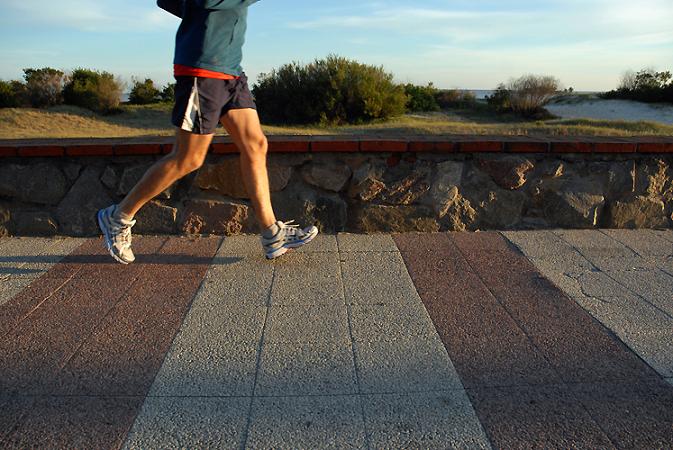
Movement is Life. Movement is a vital nutrient to your body, just as much as food, water, nerve supply or oxygen. Exercise is essential to not only achieving True Health, but a pain-free longer life. Some of the countless benefits of exercise include:
- Builds muscle mass, preserves heart muscle in the elderly
- Increases circulation of blood and lymph in the body
- Relieves depression by relaxing your mind and puts you in the present
- Improves immune function
- Stimulates the activity of fat burning enzymes
- Prevents hypertension, heart disease and hardening of the arteries
- Relieves pain and increases mobility of joints
- Lowers blood sugar in diabetics, reduces need for insulin
- Strengthens the bones and helps prevent osteoporosis
Unfortunately, a typical day for most people includes sitting in the car on the way to work, sitting at a desk all day at work, sitting in front of the television at night, and then laying down to go to sleep. This inactivity is leading to our skyrocketing levels of obesity and preventable diseases. In order to adapt you need to spend more energy to maintain health.
What Type of Exercise is Best?
Any activity is better than no activity. Too many people think that if they don’t make it to the gym or set aside time for a 5-mile run, they can’t meet their exercise quota. Pure nonsense; after all, physical activity existed long before fitness clubs and fancy workout equipment did. Add activity everywhere in your life, everyday – and remember, anything extra you can do is better than nothing. Park your car farther away. Take the stairs. Walk from work to lunch and back. Walk every chance you get. Pick up the leaves in your yard, clean the gutters, rake the grass, etc. Take your dog for a jog; do push-ups with the kids; there are endless ways to stay active even during the busiest of days.
Chiropractic & Exercise
As your spine changes, you may notice strengths and weaknesses you were not aware of before you started receiving chiropractic care. Participate in exercises which strengthen your body, and avoid jarring activities which place harmful stress on your neck and spine. Yoga and pilates are focused on your core and associate well with chiropractic care.
In all forms of exercise, keep your neck in an upright position. Avoid forward flexion of your neck, particularly during work-outs with weights, as this movement can reverse the proper forward curve in the neck, and therefore interfere with your adjustment (which aims to restore and maintain proper alignment).
Many activities in our culture, such as using computers, driving vehicles, and reading books, tend to subluxate the neck into a damaging position. Make a habit of stretching your cervical spine “up and backward” several times per day. Further specific home exercise may be advised for your particular case.
Sit-ups on an exercise ball are preferable to floor sit-ups, to avoid compression of your spinal joints, and to promote elongation and stretching of your spine. When doing any sort of low back exercise, avoid extending your spine backward beyond 180ْ . There is no need or purpose for your spine to be exerted beyond the normal standing posture (which is 180ْ ) and doing so can compress the joints of the lumbar vertebrae.
The 4 Components of a Complete Exercise Routine:
- Aerobic: Jogging, using an elliptical machine, and walking fast are all examples of aerobic exercise, which will increase the amount of oxygen in your blood and increase endorphins, which act as natural painkillers. Aerobic exercise also activates your immune system, helps your heart pump blood more efficiently, and increases your stamina over time.
- Strength Training: A strength training routine will ensure that you’re really optimizing the possible health benefits of a regular exercise program. You need enough repetitions to exhaust your muscles. The weight should be heavy enough that this can be done in fewer than 12 repetitions, yet light enough to do a minimum of four repetitions. It is also important NOT to exercise the same muscle groups every day. They need at least two days of rest to recover, repair and rebuild.
- Core Exercises: Your body has 29 core muscles located mostly in your back, abdomen and pelvis. This group of muscles provides the foundation for movement throughout your entire body, and strengthening them can help protect and support your back, make your spine and body less prone to injury and help you gain greater balance and stability. Pilates and yoga are great for strengthening your core muscles, as are specific exercises you can learn from a personal trainer. Core exercise should be simple, exercises you can do with very little equipment and in virtually any location. Focusing on your breath and mindfulness along with increasing your flexibility is an important element of total fitness.
- Stretching: When stretching, avoid sudden twists, or movements beyond normal limits of motion, particularly in the neck. Stretching to the end of your range of motion is encouraged. If you hear an audible sound come from your spine during proper stretching, do not be alarmed. However, under no circumstances should you attempt to “force” an audible sound by stretching of “cracking” any part of your spine. Research has shown this type of activity to cause spinal damage, ligament laxity, and disc irritation. Chiropractic adjustments specifically address subluxated vertebrae, while gross manipulations of the entire regions of the spinal column can aggravate vertebrae that are already subluxated.

